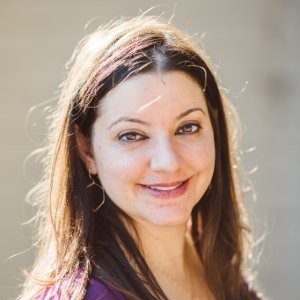
Back in 2002, Thomas Kraft, managing director of Norpac Fisheries Export, came up with the idea to electronically track each fish the company captures and sells. Soon after Norpac’s electronic monitoring system was up and running two years later, Kraft realized that the technology was not only an effective management tool, but it could also help the company trace fish through the supply chain and guarantee its products were not caught using illegal, unreported and unregulated (IUU) fishing practices.
In fact, the nonprofit Future of Fish identifies tracing fish through the supply chain as one of the best ways to curb overfishing – one of the greatest threats to our oceans, where 85 percent of global fish stocks are fully or over-exploited, according to the organization. And now companies like Norpac are turning to technology to make fish traceability more efficient and accurate.
At Norpac, fish are monitored from the time the ship hits the dock, Kraft says. While offloading their boats, fishermen tag each fish with a barcode and record pertinent information about their catch, including vessel information, species, weight, and time and location of the catch. Some of Norpac’s boats are equipped with radio-frequency identification (RFID) tags; fishermen on these ships wrap a Velcro strap with a RFID chip around each fish’s tail. The company’s RFID reader is then tied to a vessel monitoring system, allowing the company to validate, within a few hours of capture, that fish were caught in legal fishing areas, Kraft says. When a boat lands, government observers make a note of each fish caught and compare their records against the vessel’s log books, further verifying the ship’s catch.
As fish move into the processing stage and are broken into their component parts, processors issue barcodes for each part of the fish and connect the new codes back to the original barcode. For example, each of the four loins of a tuna will have a separate barcode, Kraft explains.
“If you have a piece of fish in a box in the back room at a supermarket or restaurant with our barcode information on the package, we can determine exactly which fish, which vessel [it came from], which day [it was caught] – the entire logistics chain,” he says.
Kraft, a former certified public accountant, says Norpac’s system essentially creates a reliable audit trail, and the company works with third-party auditors FishWise and MRAG Americas to verify its data.
Michael Carroll, vice president of the fisheries and aquaculture division at environmental consulting firm Vertex, is also developing technology to follow fish through the supply chain. When the environmental economist assisted a client in implementing a traceability system several years ago, he found that currently available databases couldn’t corroborate information the company inputted against fishery data reported to the government. Meanwhile, Carroll’s former classmate and colleague Mark Soboil was working in New Zealand, helping the country’s largest fishing company set up a fishery management database that also traced its fish through the supply chain and verified supply chain data against government records. The pair teamed up to spin off a new company from Vertex, BackTracker, to bring the technology system created in New Zealand to other companies worldwide.
One of the most important features of the BackTracker system is data validation; authenticating data in the system with ground-level information already filed with the government gives certainty to a fish’s traceability, Carroll says -- and helps combat overfishing. In most modern fishing countries, fishermen are required to report landings data, Carroll says, including vessel permit number, weight of fish captured, location of capture and type of gear used. BackTracker uses this landings data to verify the records a company enters into the system.
But fishermen are often reluctant to release their landings data, Carroll explains, because it reveals their trade secrets: how and where they fish. BackTracker overcomes fishermen’s privacy concerns with sharing their intellectual property by applying algorithms and data tailoring tools to the landings data.
“We use aggregate tools or data tailoring to manipulate the data slightly, so that it’s not so sensitive, and [so that data takes a form] that [fishermen are] comfortable sharing, but is valuable in the market and to the next person in the supply chain,” Carroll says. “BackTracker allows fisherman and supply chain participants to retain full control over their data, but offers them tools to share information with the market.”
But is the rest of the fishing industry ready to embrace the kind of traceability technology employed by BackTracker and Norpac to make a dent in the overfishing problem?
Carroll is currently in talks with several U.S. and European companies about implementing the BackTracker system, as well as discussing with government agencies the possibility of adopting BackTracker industry-wide and incorporating a third-party accreditation process.
Krafts says that the seafood sector – like most industries – readily adapts technology when it results in quick efficiencies, such as new refrigeration equipment to preserve a product’s shelf life. And while Norpac’s electronic tracking system has saved the company both time and money, traceability’s benefits are not as immediate as and require more work than quick fixes, Krafts says, so it may take the industry longer to get on board. But, he thinks that more companies will implement electronic traceability programs if consumers increasingly demand fish that is certified to be caught responsibly and become more disapproving of fishermen engaging in illegal fishing practices.
Image credit: Norpac Fisheries Export via Facebook and Pexels

Passionate about both writing and sustainability, Alexis Petru is freelance journalist and communications consultant based in the San Francisco Bay Area whose work has appeared on Earth911, Huffington Post and Patch.com. Prior to working as a writer, she coordinated environmental programs for various Bay Area cities and counties for seven years. She has a degree in cultural anthropology from UC Berkeley.














